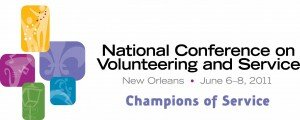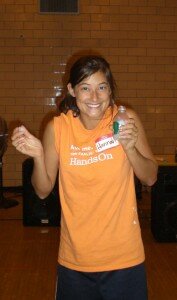Reading this title you may ask yourself “Why would I ever want to volunteer over the holidays if it will be like Black Friday shopping?”
We know Black Friday shopping can be extremely chaotic stressful for most people with the large crowds, circus of holiday decoration, and battles over the year’s most prized toys.
over the year’s most prized toys.
How does this have anything to do with volunteering?
Holiday volunteering can be just as stressful and overwhelming with the hundreds of volunteer opportunities, overcrowding of people wanting to fulfill the New Years resolution, and trying to fit it in to your already hectic holiday schedule.
How will you ever be able to give back to the community if your volunteering experience becomes as crazy as planning for Black Friday shopping? By following your general protocol for holiday shopping plans, your volunteer experience can go smoothly and actually be enjoyable.
You may even want to make it an actual habit unlike the one time a year holiday shopping event. Follow these tips to make volunteering an option this holiday season.
- Define your goals. Like holiday shopping planning where you must figure out what you need to buy and who to buy for, holiday volunteering requires you to ask yourself these same questions like who do you want to serve and what do you want to do? You should consider what the scope of your project is, what you want to see happen in your community as a result of your project, how your goal choice will affect how you select and plan the project based on all your resources.
-
Creating a group project team. Holiday shopping requires a team of other people who can help with gift ideas and sometimes shopping with others can make it seem less overwhelming. Holiday volunteering also can be more enjoyable with
 a team of volunteers that donate various skills and ideas to the project. When planning a volunteering project consider who has participated in past volunteering experiences, who has expressed an interest, and who has demonstrated good leadership.
a team of volunteers that donate various skills and ideas to the project. When planning a volunteering project consider who has participated in past volunteering experiences, who has expressed an interest, and who has demonstrated good leadership. - Selecting a project. Holiday shopping has a very important goal selecting the perfect gift that will bring cheer in the hearts of your loved ones. Holiday volunteering is exactly that selecting a project that will best help the issues that affect your community. You consider what issues concern community members, what charities are supported, what skills can be of benefit, understand your project, and what types of activities would be most successful.
-
Planning the project. Black Friday shopping will be most effective with careful planning. Holiday volunteering also requires lots of planning before putting it into effect. Before starting your project organize the work, define your timeline, and share your success!

- Recruiting volunteers. The most important task in planning holiday volunteering projects is recruiting other volunteers to participate. Consider whether you will recruit members from an organization or your friends and family, what age group you wish to engage, how will you reach volunteers, and whether or not you will recruit outside your community.
- Budget and resource development. A well-organized budget is critical to a successful shopping trip, as well as a successful service project. You should consider what tasks need to be completed and financial resources you need.
- Implementing the big day. After all this planning no matter if you’re shopping or volunteering, you want the day to run smoothly and according to plan. Some things that you should consider to guarantee this will happen include designating decision makers and team leaders, providing training and orientation, taking time for reflection, and celebrating your success.
While the holidays can be the most overwhelming and stressful time of the year, they can also be quite rewarding and fun at the same time.  Volunteering your time and skills during the holidays will allow you time to reflect about how truly rewarding helping others in the community can be.
Volunteering your time and skills during the holidays will allow you time to reflect about how truly rewarding helping others in the community can be.
Hope these tips help and good luck with your holiday shopping!

 You know that publicity is important for spreading your organizations message to the world, but how exactly do you do it? The most important step in your communication plan should be start early, before the demands from your organization start pulling you in too many different directions. Here is a to-do-list that can make contacting the media about your projects less daunting:
You know that publicity is important for spreading your organizations message to the world, but how exactly do you do it? The most important step in your communication plan should be start early, before the demands from your organization start pulling you in too many different directions. Here is a to-do-list that can make contacting the media about your projects less daunting: Identify your audience and set your organization’s priorities. Brainstorm a list of people that can help you accomplish your organization’s goals. Spend most of your time with the people who can help spread your organization’s message and diversify your audience more.
Identify your audience and set your organization’s priorities. Brainstorm a list of people that can help you accomplish your organization’s goals. Spend most of your time with the people who can help spread your organization’s message and diversify your audience more. AppMakr.com is a browser-based platform designed to make creating your own iPhone app quick and easy. Its free drag and drop tool enables anyone to build rich content based apps using a point and click solution.
AppMakr.com is a browser-based platform designed to make creating your own iPhone app quick and easy. Its free drag and drop tool enables anyone to build rich content based apps using a point and click solution.




 This special 3-hour workshop at the
This special 3-hour workshop at the 


 Today’s post comes from Tricia Thompson,
Today’s post comes from Tricia Thompson,  In the mean time, HandsOn University has been experimenting with online learning tools and has developed two courses, one on
In the mean time, HandsOn University has been experimenting with online learning tools and has developed two courses, one on  1.
1. 


 Today’s post comes from Hannah Dalporto, a Youth Leadership Intern with
Today’s post comes from Hannah Dalporto, a Youth Leadership Intern with 
